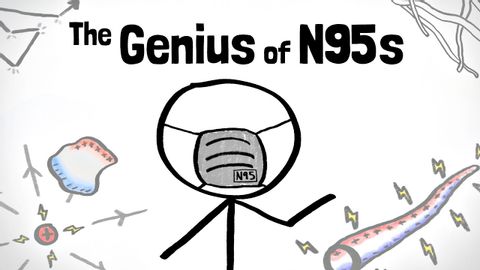N95マスクの驚くべき物理学 (The Astounding Physics of N95 Masks)
Summer が 2021 年 01 月 14 日 に投稿  この条件に一致する単語はありません
この条件に一致する単語はありません- v.t./i.突き刺す : 刺し込む;貼る : くっつける;とどまる;突き出す;我慢する
- n. (c.)棒
US /ɪn'gedʒ/
・
UK /ɪn'ɡeɪdʒ/
- v.t.武力によって衝突する;雇用する;人の興味を引く;従事する;かみ合う;約束する
US /ˈpɚmənənt/
・
UK /'pɜ:mənənt/
- adj.永続的な;常勤の;恒久的な
- n.正社員;パーマ
US /ˌɡærənˈti/
・
UK /ˌɡærən'ti:/
- v.t.品質保証する;約束する;支払い保証をする;法的保証
- n. (c.)製品保証;保証;担保
エネルギーを使用
すべての単語を解除
発音・解説・フィルター機能を解除

